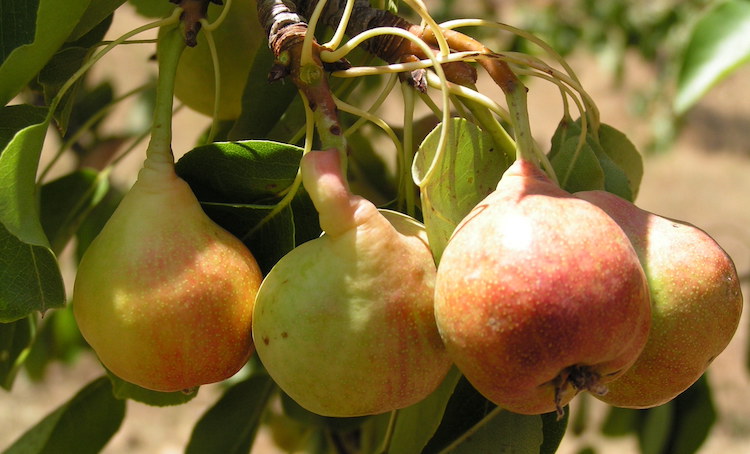Pears, Ancient Fruits Of Sardinia 0 Comments

Recovering the ancient Sardinian fruit varieties means also recovering the heritage of a territory and part of its history. At the Institute of Food Production Sciences (ISPA) traditional Sardinian fruit growing and its biodiversity are being studied, analysing their nutritional and organoleptic properties. It has been discovered that Sardinian apples, pears and plums have a higher content of polyphenols and antioxidants to those grown elsewhere.
The island’s cultivations are ancient, the geographical isolation has favoured the development of typical Sardinian kinds. Among them there are citrus fruits (Oranges from Muravera), almonds, peaches from San Sperate, strawberry trees and even pears.
We have varieties of pears that have always been grown only in Sardinia, a legacy of ancient rural tradition, handed down from generation to generation. Let's see some of them.
Sa Pira Mamoi, is part of the "forgotten ancient fruits", and it is a variety of pear that holds within itself a history of tradition spanning centuries of history. It was a fruit appreciated by shepherds during transhumance time, due to its long shelf life. Its organoleptic characteristics were also used to perfume drawers and chests. It has a flattened shape which makes it look almost like an apple with a waxy and beautiful appearance. It was harvested in early October but as soon as it was picked it was inedible so, to be consumed in winter, it was subjected to a ripening and preservation process which consisted of immersing the fruit in spring water with the addition of salt or vinegar which made it black but easier to peel and eat.
Sa Pira Camusina, the Sardinian early pear, is a variety risking extinction. It is grown only in a few areas of the island and it deteriorates a couple of days after harvest, therefore requiring immediate consumption. The name of Pera Camusina perhaps comes from Camogli in Liguria, from where it was imported. It is a rustic and native pear, harvested at the end of June and the beginning of July. It is small, has yellow-green skin reddened in the parts exposed to the sun, firm and juicy and very sweet.
Sa Pira Olzale, the black pear of longevity: unlike the Camusina, it is left to ripen to make it soft. The peel colour has a very dark shade, almost black when it reaches complete maturity, it is eaten with a spoon by cutting it in half. Among its properties, the tannins contained in the fruit contribute to Sardinian longevity, which we should then add to the foods described in our blog: 10 Healthy Foods From The "Blue Zone" Sardinia.
Sa Pira De Bau, the juicy and sweet summer pear, is harvested in July, and is consumed fresh but is also widely used for fruit juices.
Sardinian pears are resistant to diseases but those from Nuoro and Barbagia do not produce mycotoxins, therefore they do not have mold and this peculiarity is being studied by the University of Cagliari. It has also been discovered that Vacchesa pear freeze-dried is giving excellent results in the study of dental and periodontal diseases, against halitosis from dental disorders and against free radicals after oral cavity operations. It is also an excellent wound healing agent, so much so that its use is being studied for Helicobacter pylori.
“What Homer defined as "a gift from the gods" is actually a plethora of many large and small fruits, oblong and plump, acidic and very sweet, with a fine or granular texture, compact or very soft. All children of a mother plant, Pyris communis.” (Licia Granello)
--
Share your opinion with us!